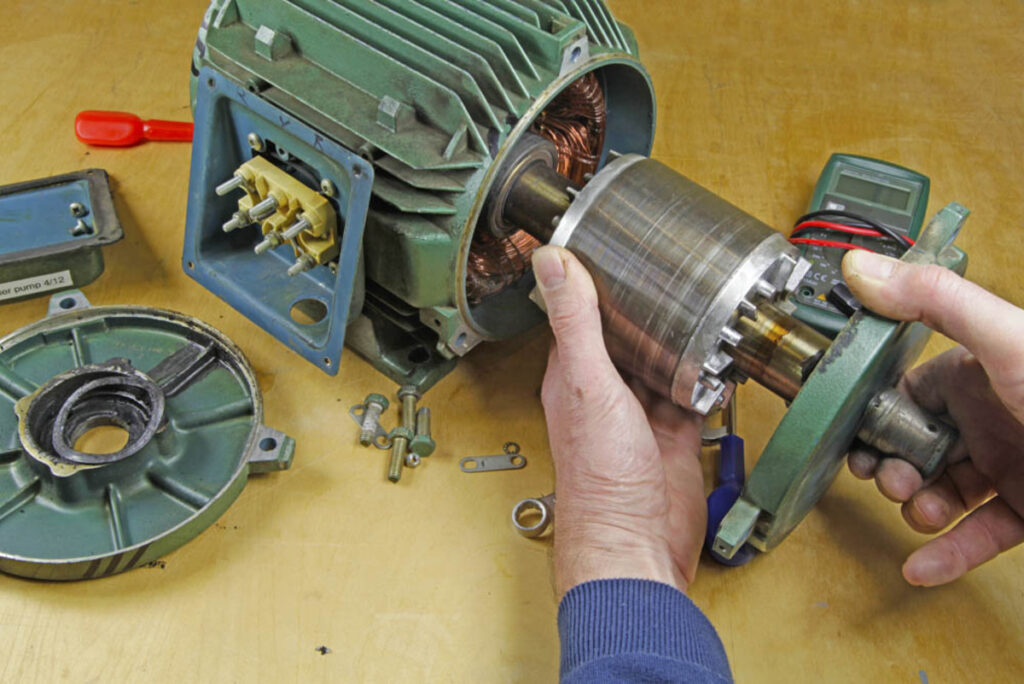Cleaning an Electric Motor a dirty motor necessitates the use of tiny metal and electrical components. To avoid injuring the motor’s components, gently remove them. They can be removed with a degreaser or other non-flammable cleaning solution. If you have any problems when cleaning the motor, take it to an electrician for expert restoration.
ways to Cleaning an Electric Motor
Disassembling the Electric Motor
1Remove the motor from its mounting and disconnect it.
Unplug the motor from the power supply. Power should not be fed into the motor, otherwise you will be shocked. Remove any fasteners that are keeping the motor in place.
- If you suspect the motor has an electrical charge, you can test it using a multimeter.

2Unplug the wires from the terminals.
- Make a note of the wire positions so that you can rejoin them later. You might wish to snap images to aid in this process.

3Using a gear puller, remove the puller.
- A gear puller is available at most hardware stores.

4With a center punch, mark the end bells.
- Make one mark on the end bell beneath the pulley and two marks on the opposite end bell.
- Your motor may also include housings, which are lengthy metal tubes. These can be found behind the final bells. Mark them all the same.

5Using a socket wrench, remove the bolts from the end bells.
- Depending on your motor, you may require a box wrench or a screwdriver instead.

6Using a soft-faced hammer and screwdriver, tap the bells loose.
- Don’t forget to grab both bells, including the one on the other side of the pulley.

7Disconnect the motor’s ends and the starting switch.
- If your motor does not have a starting switch, it will have a horizontal brush housing. Look inside for the large bundle of copper wires.
- Take note of the location and amount of shims. Shims are flat metal objects that resemble two-pronged forks.

Cleaning the Components
1Wipe the dirt off the motor’s exterior using a rag.
- Many general stores and automotive retailers sell degreasers.

2Brush dirt away from wiring areas with 220 to 240-grit sandpaper.
- Rubbing the wires or getting them wet might cause your motor to short circuit. The tightly coiled wires are difficult for most individuals to repair.

3Clean the interior of the motor using a rag and degreaser.
Choose a non-flammable cleaning solvent, such as the degreaser you used to clean the motor’s exterior. Moisten a clean rag with the solution, then use it to wipe trash from whatever location you can reach. Avoid getting anything on the wires.
- If you can’t reach part of the degreaser, blow on the area until it dries.

Reassembling the Motor
1Reassemble the wires in the switch or brush ring.
- The motor should function normally as long as the cables are not damaged.

2Replace the components that were removed for cleaning.
- Remember to slip the opposite end bell onto the shaft’s opposite end.
- Make sure any shims you spotted before are properly positioned around the end bells.

3End bolts should be inserted into end bells.

4Tap the end bolts into place using a hammer.

5To test the motor, turn the shaft by hand.
- Check the punch markings to ensure that the bells are on the correct end of the motor. Remove the bells and replace them.

6Connect the connections to power the motor.
- If you’re not sure where to put the cables, search for a schematic online. Connect the wires according to their color.


